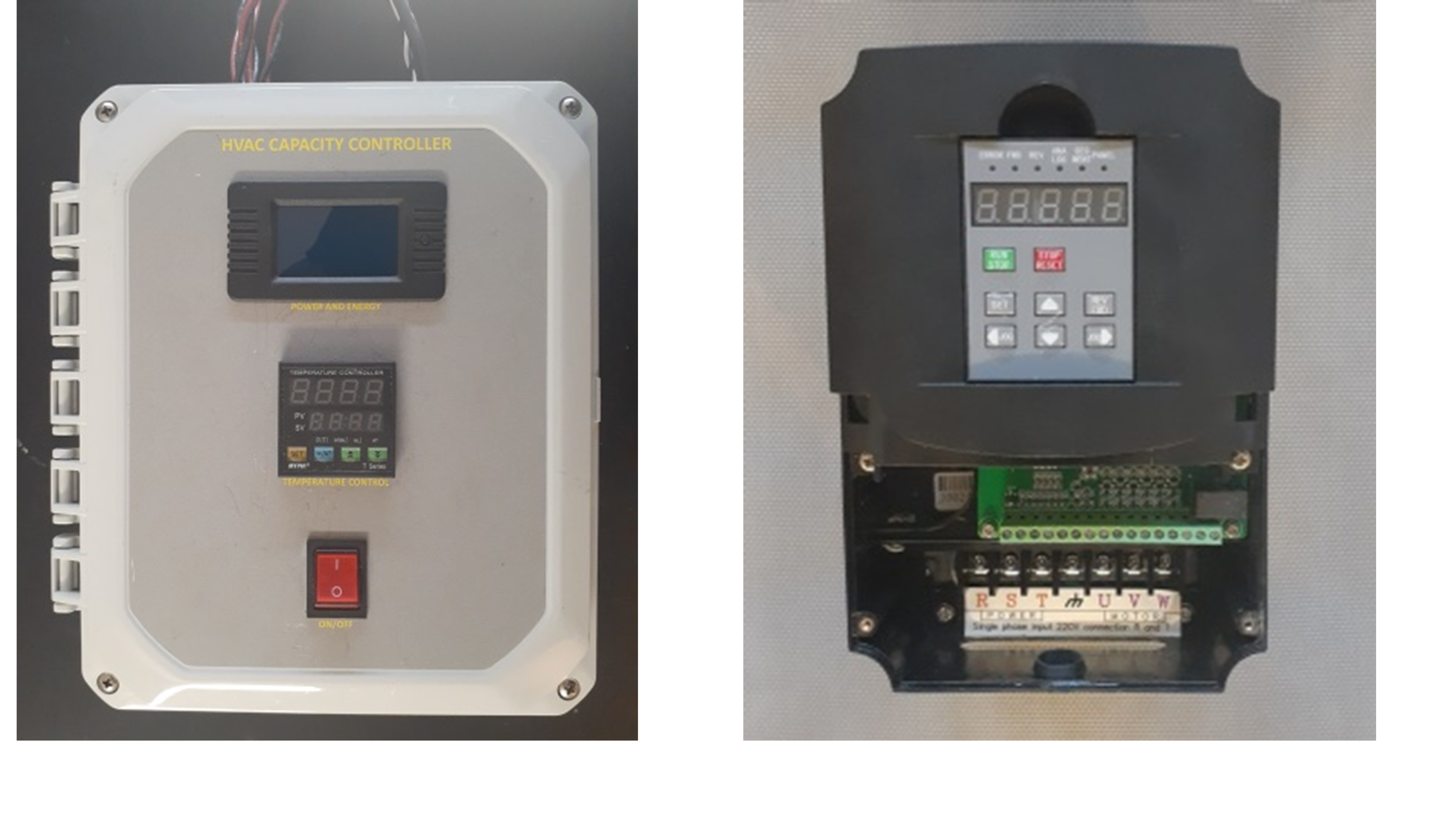Project Info
COMPLETE
 Project Title
Project Title
 Project Title
Project Title
HVAC Capacity Controller
Project Number ET23SWE0058 Organization SWE (Statewide Electric ETP) End-use HVAC Sector Commercial Project Year(s) 2023 - 2025Project Results
There are millions of “fixed-capacity” or “fixed-speed” heating, ventilation, air conditioning, and refrigeration (HVACR) systems already installed throughout California that are a significant component of peak demand and summertime stress for the electric utility grid. These HVACR systems typically operate in two states, on or off, and utilize maximum power and energy whenever in the on state. Traditional fixed-capacity or fixed-speed HVACR systems do not regulate electrical power demand according to the cooling or heating requirements of the space to be cooled or heated, they simply turn fully on or fully off based on thermostat settings. These systems are often operating inefficiently because the electrical power and energy usage does not match the actual cooling or heating requirements. For example, on a relatively cool spring day at 80 °F, the amount of power and energy required to cool a space is significantly less than that required for a hot summer day at 95 °F. For residential and commercial consumers seeking to reduce their energy consumption and carbon footprint and to promote a more sustainable future for their local communities and economies, fixed-capacity or fixed-speed HVACR systems can be retrofitted with variable frequency drives (VFDs) to deliver significant efficiency improvements and a quick return on investment.The custom-built HVAC capacity controller (HCC) studied in this project is a standalone device capable of interfacing with fixed-capacity or fixed-speed HVACR systems. The function of the HCC is to provide signal inputs to the VFD, so that the VFD’s output supplies the correct voltage and frequency to produce improved cooling load matching, less on and off cycling, soft start-ups, and faster temperature pulldowns of the HVACR system. The project team’s findings are broadly relevant for any HCC, however, at the time of this report, the custom-built HCC was the only one available that could work with a VFD to reduce HVACR power demand.In this study, the project team installed custom-built HCCs to interface with the VFD, to retrofit various fixed-capacity or fixed-speed HVACR equipment that operates from 230 volts AC, 60 hertz single-phase power of 5 kilowatts maximum. Hereafter, we refer to the VFD as “the test unit” or “the VFD.” Participants in the study included several single- family residences, schools, and churches located within the Southern California Edison (SCE) service area. Data were gathered and evaluated to determine reductions in demand (peak kilowatts) and consumption (kilowatt-hours). Site recruitment proved highly efficient, due primarily to a project team member with an extensive professional network in communities targeted. However, other aspects of project progress were significantly delayed by technical challenges related to VFDs and how they interface with HVACR equipment. The project team investigated and solved these challenges, but not on time to gather data during the most important season: Summer. Initial results from installed systems are positive: As frequency is reduced, power consumption is proportionally reduced, depending on power factor. Importantly, the team found very little difference in cooling capacity between 60 and 45 hertz, even though power consumption dropped up to 25 percent.
Project Report Document
Loading PDF Preview...
